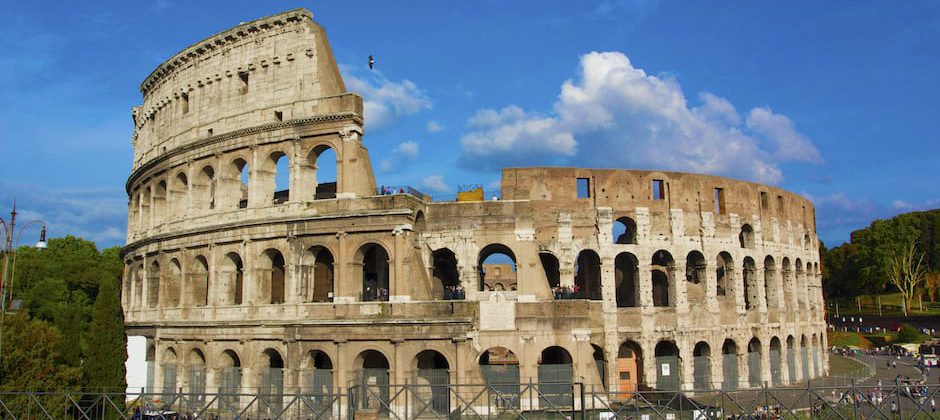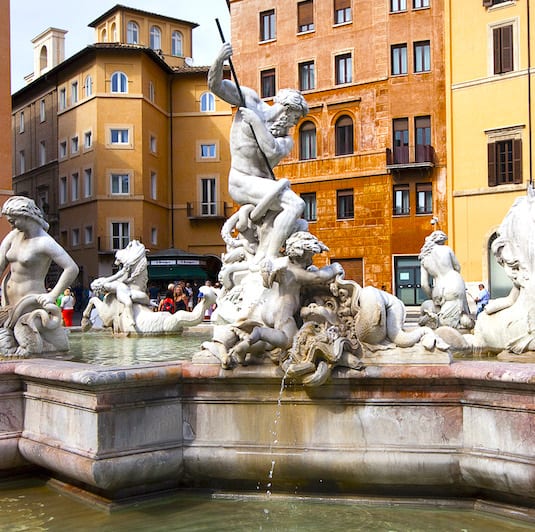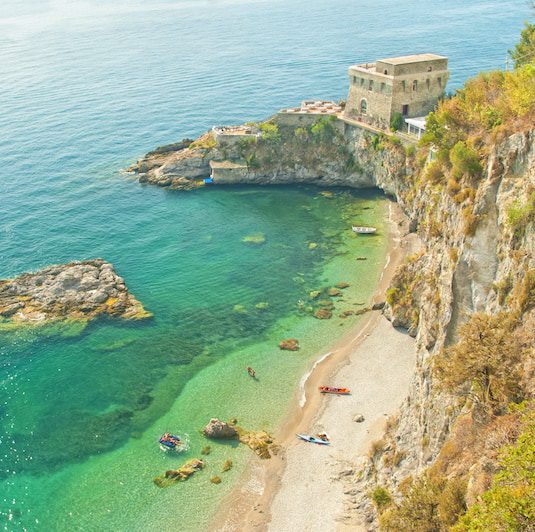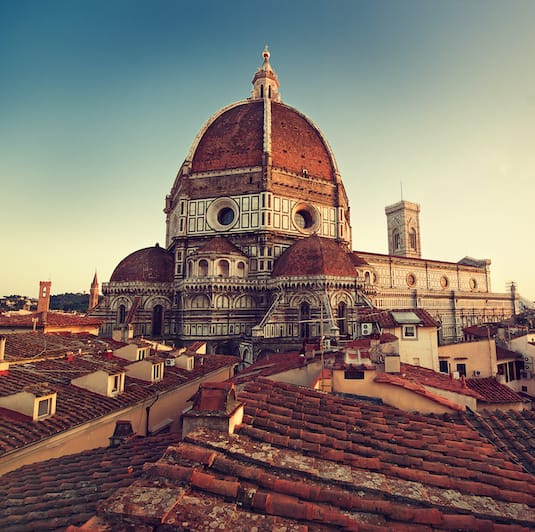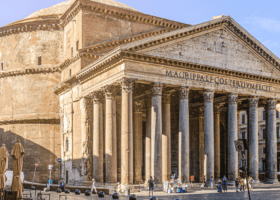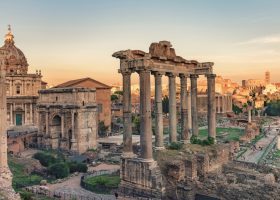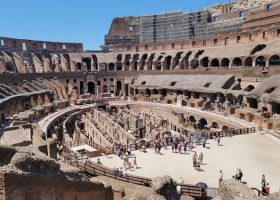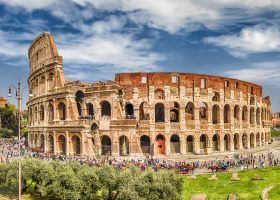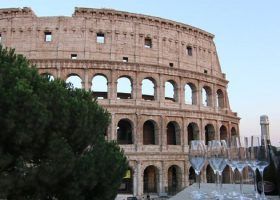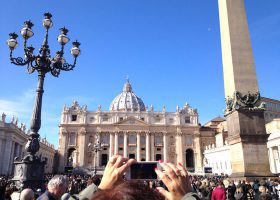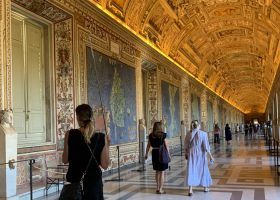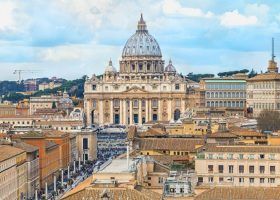Roughly 16,000 people barrel toward the Colosseum every day, yet most arrive without a plan—and Rome’s sun shows no mercy. Skip the sweaty wait, see the arena floor where gladiators fought, and still make it to aperitivo on time. Here’s your insider guide on how to visit the Colosseum.
Visiting the Colosseum
Completed in A.D. 80, the Colosseum was the largest amphitheater the ancient world had ever seen—and remains the most famous one today. Its tiered seating, underground staging, and sheer engineering were centuries ahead of their time. Visiting now is a chance to stand in the shadow of history, where real people once fought, cheered, and died.
Let’s jump into the most important things you need to know about visiting the Colosseum.
Colosseum Tickets And Hours
So, how much does it cost to see the Colosseum? Here’s what you need to know:
Ticket Types for the Colosseum
- 24-Hour Colosseum, Forum & Palatine Ticket: €18
- Full Experience Ticket (Arena): €24 – 2-day validity, includes Arena Floor
- Full Experience Ticket (Arena + Underground): €24 – 2-day validity, adds Hypogeum
- Reduced Ticket: €2 (EU 18-25) | Under-18 – Free
👉 No tickets left on the official Colosseum website? We reserve a limited number of Colosseum tickets ahead of time just for this reason.
Opening Hours (2025):
| Season | Daily Hours | Last Entry |
| Mar 30 – Sept 30 | 8:30 am – 7:15 pm | 6:15 pm |
| Oct 1 – 25 | 8:30 am – 6:30 pm | 5:30 pm |
| Oct 26 2025 – Feb 28 2026 | 8:30 am – 4:30 pm | 3:30 pm |
| Closed | Dec 25 2025 & Jan 1 2026 | — |
How to Get to the Colosseum
The Colosseum is located in the heart of ancient Rome, just east of the Roman Forum and a short walk from Piazza Venezia. Its central spot makes it easy to reach by metro, bus, taxi, or on foot.
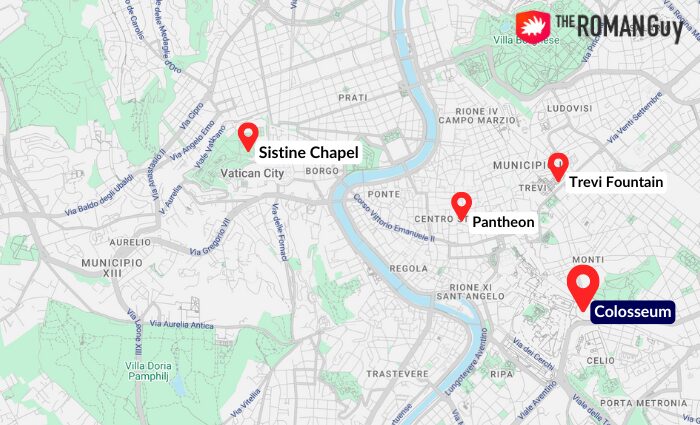
- Metro Line B: Colosseo stop lands you across the street from the entrance.
- Buses 40, 51, 60, 75, 81, 175, 204: Confirm “Colosseo” on the LED sign.
- Walk: 15 minutes straight down Via dei Fori Imperiali from Piazza Venezia (great photo ops).
- Taxi: Under €12 from most historic-center hotels; tell the driver “Ingresso gruppi, Piazza del Colosseo.”
Interessante Fact: Across Via di San Giovanni sits Ludus Magnus, the gladiator training school linked to the arena by a private tunnel.
👉 Can’t be bothered with logistics? Our Rome in a Day Tour supplies the van, the guide, and the skip-the-line entry.
Best Guided Tours of the Colosseum
For your time, budget, and interests.
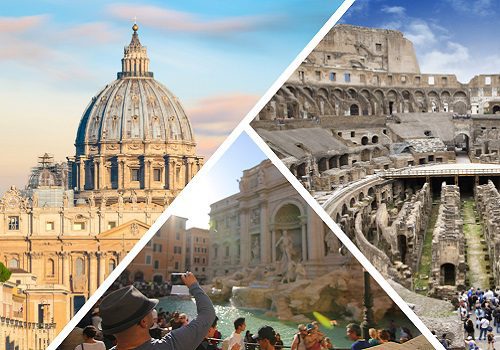
Rome in a Day Tour with Colosseum and Vatican Museums
7 Hours | €€€
Enter the Sistine Chapel, Roman Forum, and see St. Peter’s Dome, Pantheon, Trevi Fountain, and more.
Book Now!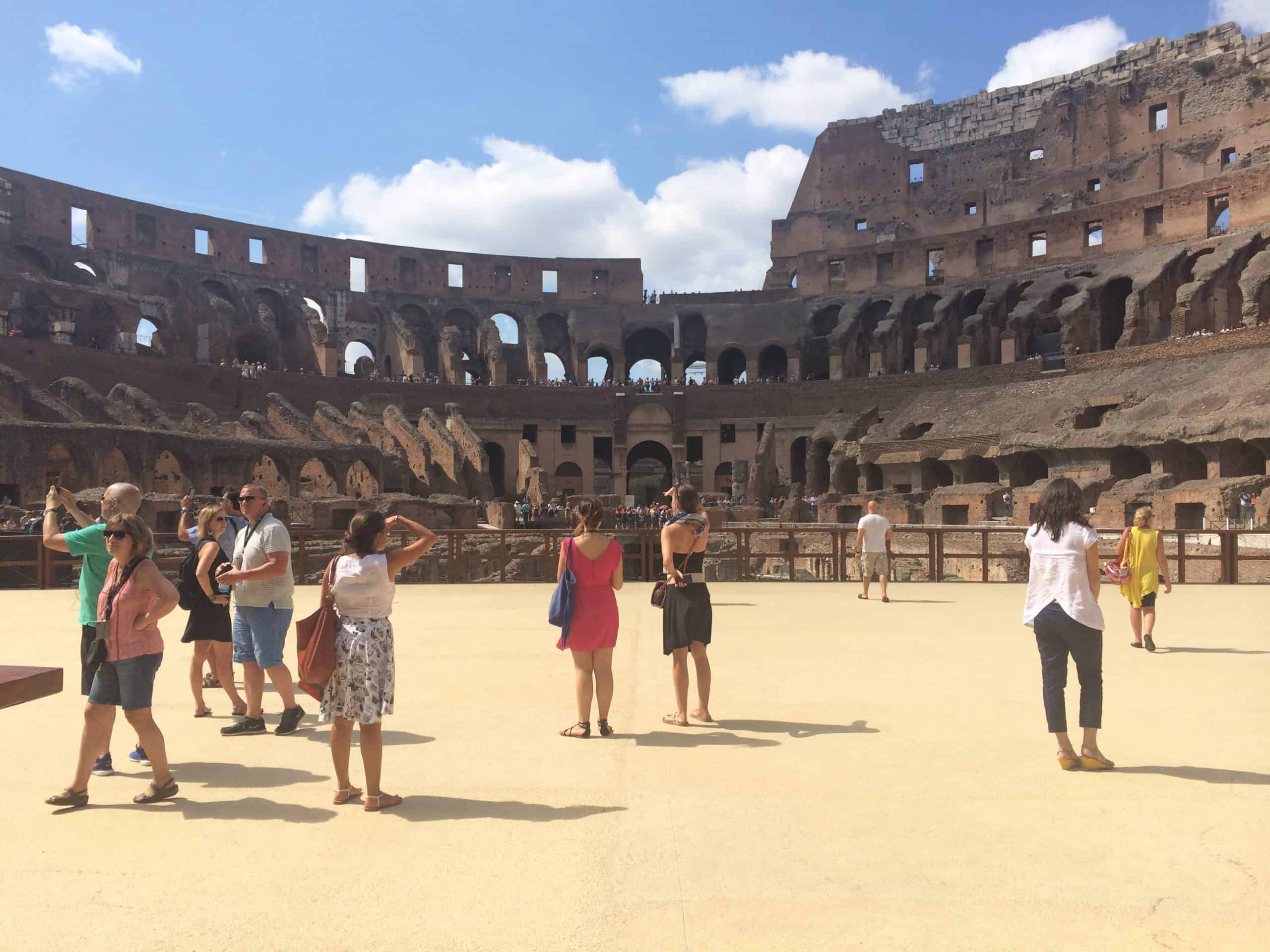
Special Access Colosseum Arena Floor Tour through the Gladiator’s Gate
3 Hours | €€
Walk in the footsteps of gladiators on the Colosseum floor and see the Roman Forum and Palatine Hill.
Book Now!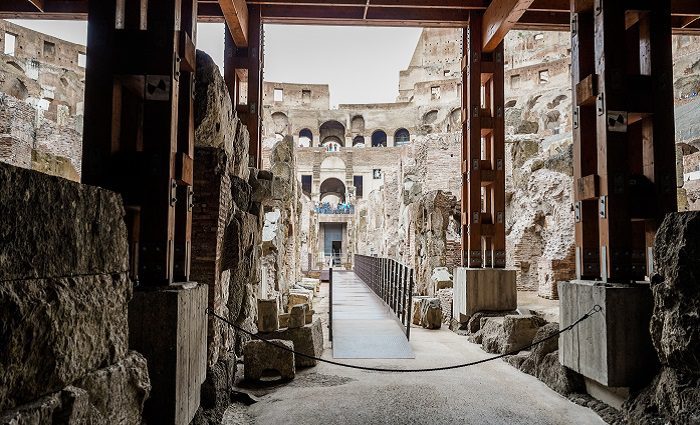
Colosseum Underground Tour with Roman Forum and Palatine Hill
3 Hours | €€€
Get special access to the Underground dungeons and Arena Floor on this guided tour.
Book Now!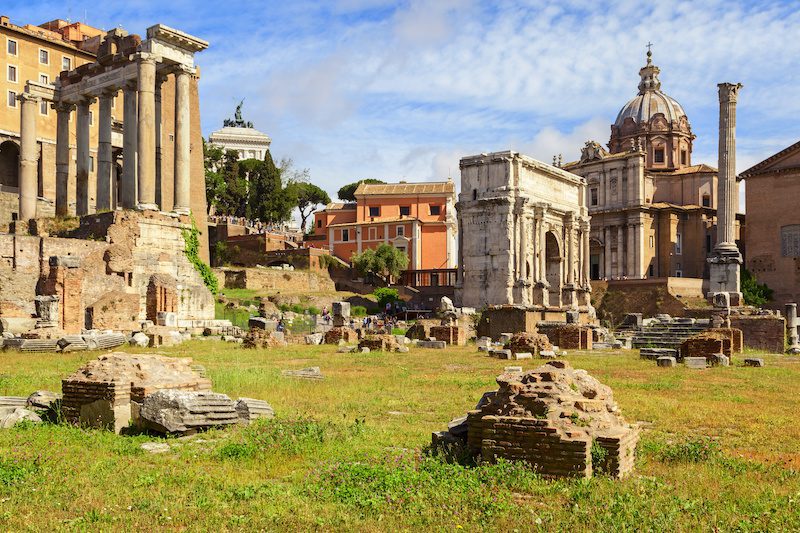
Privileged Entrance Colosseum Tour with Roman Forum & Palatine Hill
3 Hours | €
Skip the line at the Colosseum, plus Arch of Titus, Temple of Julius Caesar, and more.
Book Now!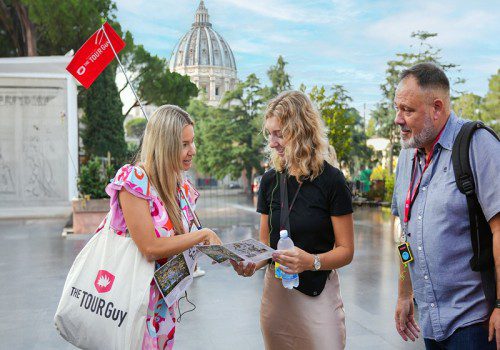
Private Rome in a Day Tour with Colosseum & Vatican Museums
7 Hours | €€€€€
See the best of Rome your way with a private guide at the Sistine Chapel, Trevi Fountain, and more!.
Book Now!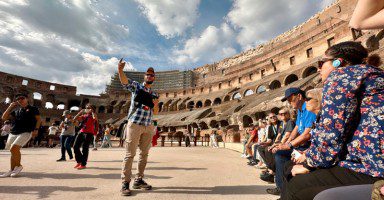
Semi-Private Colosseum Tour with Arena Floor
3 Hours | €€€
Stand where gladiators fought on the Colosseum floor, then tour the Roman Forum and Palatine Hill.
Book Now!👉 Not ready to book? Dive into our guide, Best Colosseum Tours to Take and Why
Visitor Tips for the Colosseum
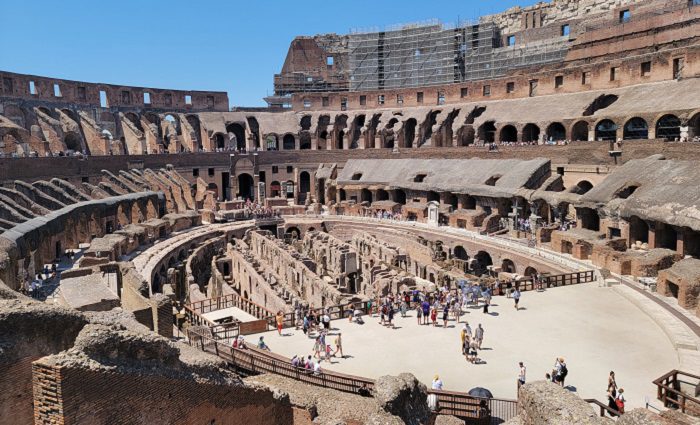
To make the most of your visit, follow these tips.
- Book timed entry at least two weeks in advance or risk missing out.
- Choose late‑day slots to avoid heat and crowds.
- Don’t bring along large backpacks, you’ll have to wait in an extra line to use the lockers.
- Use sturdy footwear; ancient marble is slippery.
- If you have the budget, go for a guided tour. Otherwise, you’ll miss the incredible stories that bring these ruins to life.
How Long Does a Colosseum Tour Take?
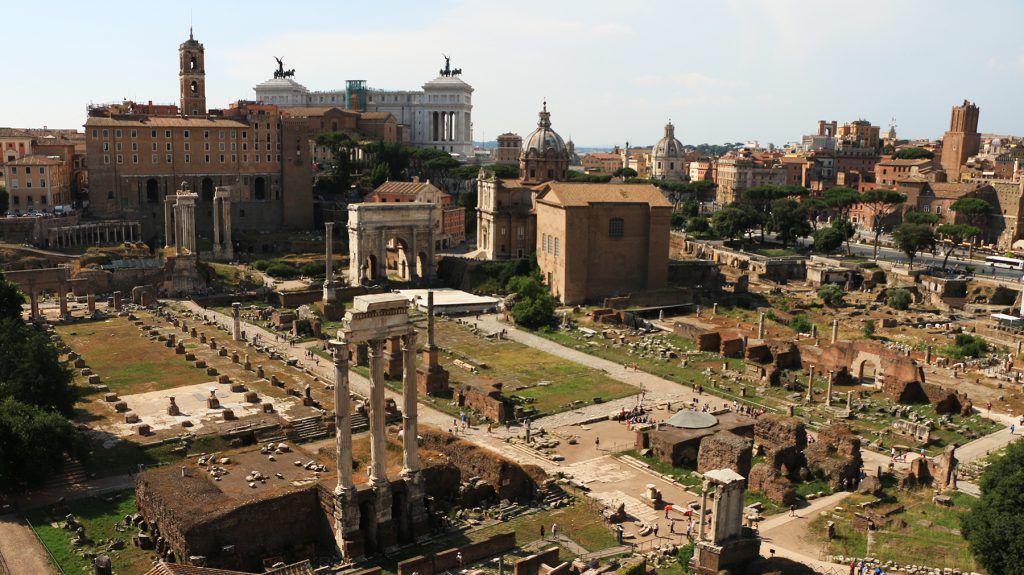
A guided Colosseum tour typically lasts about 3 hours, which includes time in the Roman Forum and Palatine Hill. If you’re exploring on your own, budget at least 2 hours. Adding the Arena Floor and Hypogeum tacks on roughly 30–45 minutes.
What to See at the Colosseum
Your ticket covers three separate sites—don’t leave half the value on the table.
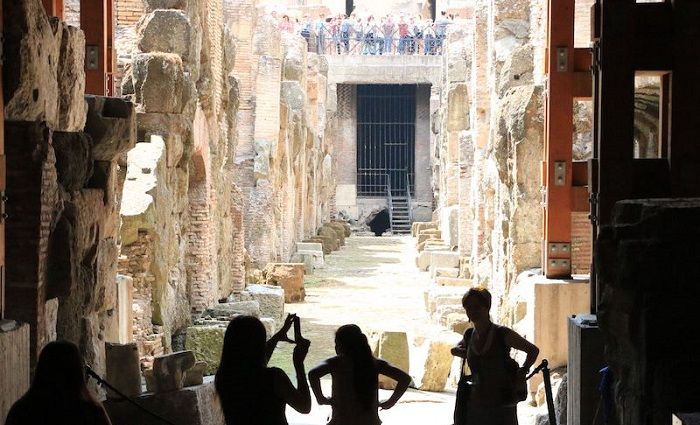
👀 Click on the name of the stop for a detailed explanation!
- Arena Floor: Stand where gladiators fought—available only with Arena or Underground tickets.
- Hypogeum (Underground): A labyrinth of animal cages and 80 wooden elevators.
- Second-Floor Exhibit: Ancient concession-stand spoons, oyster shells, and souvenir flasks.
- Palatine Hill – Hippodrome of Domitian: Rome’s poshest backyard racecourse.
- Roman Forum – Arch of Titus, Temple of Julius Caesar, Via Sacra: The heartbeat of imperial politics.
Interessante Fact: Before the Hypogeum existed, the Romans flooded the arena for mock naval battles complete with scaled-down triremes.
👉 Our Semi-Private Colosseum Underground Tour hits every single spot above—with just seven guests.
Top Hotels in Rome
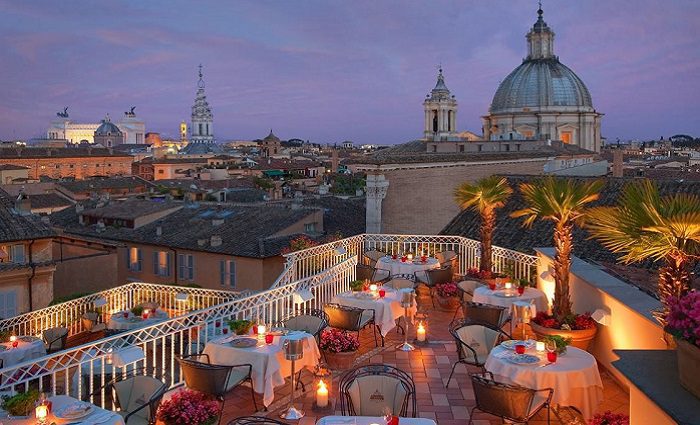
Bio Hotel Raphael ⭐⭐⭐⭐⭐
Piazza Navona • Terrace
Luxury hotel with a rooftop restaurant plus spacious and calming suites near Piazza Navona.
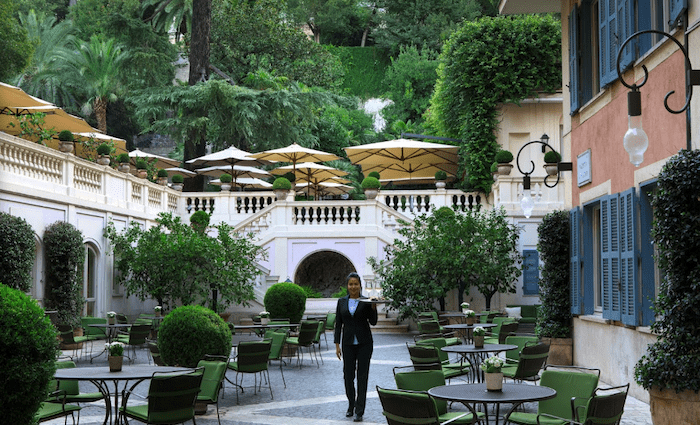
Hotel de Russie ⭐⭐⭐⭐⭐
Timeless Luxury • Spanish Steps
Popular hotel for VIPs like Bruce Springsteen with a classic Italian style and a dreamy courtyard.
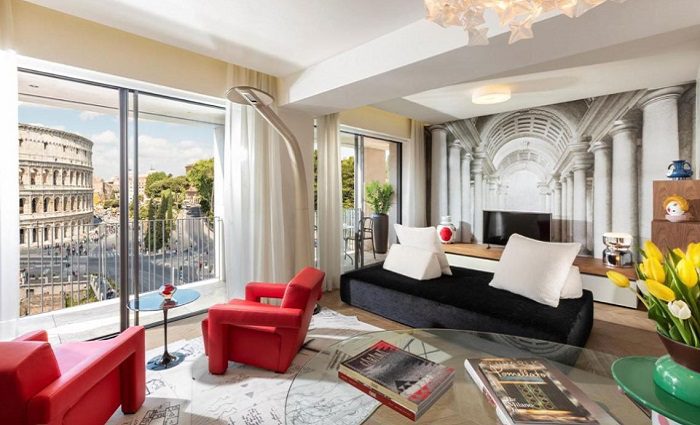
Palazzo Manfredi ⭐⭐⭐⭐⭐
Luxury • Near Colosseum • Terrace
Wake up to views of the Colosseum and enjoy meals on a stunning terrace in this top hotel in Monti.
Where to Eat Near the Colosseum
Don’t let hunger ruin your ancient-Rome day.
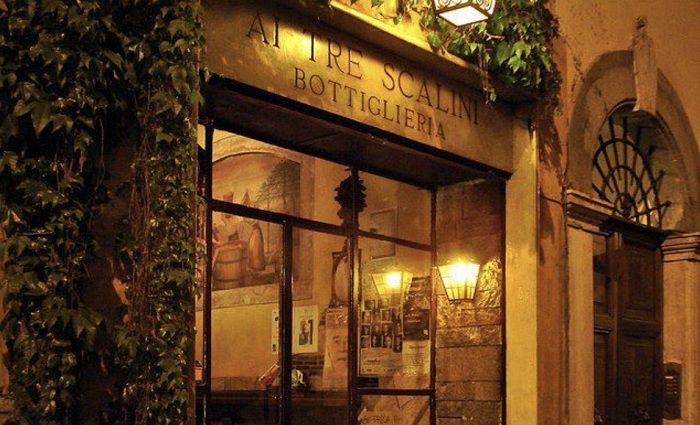
Colosseo Cafè Tanzi dal 1982: € | Grab & Go — espresso, panini, and pastries five minutes from security.
Pasqualino al Colosseo: € | Pizza al Taglio — Roman-style pizza by the slice, perfect for a quick but filling lunch.
Naumachia: €€ | Crowd-Pleaser — hearty lasagna and bistecca in a vaulted stone dining room.
Ai Tre Scalini: €€ | Wine & Small Plates — Monti hotspot for cheese boards and local reds.
Interessante Fact: Ancient vendors inside the Colosseum sold oysters and chilled mulled wine—stadium snacks haven’t changed much in 2,000 years.
👉 Find more Great Restaurants Near the Colosseum.
Attractions Near the Colosseum
These are all within walking distance of the Colosseum and make a great addition to your Rome itinerary.
- Arch of Constantine: Triumphal monument two minutes away.
- Ludus Magnus: Peer into the remains of the gladiator training school just across Via di San Giovanni.
- Monti District: Vintage boutiques, craft-beer bars, and ivy-draped alleys perfect for an aperitivo crawl.
- Basilica di Santa Maria Maggiore: Rome’s grandest Marian church, glittering with 5th-century mosaics.
Frequently Asked Questions About the Colosseum
Yes, timed entry is strictly enforced, and same‑day tickets are often unavailable.
Absolutely, these areas (Arena Floor & Hypogeum) are the heart of the Colosseum and not included with standard tickets.
Early in the morning or one of the last time slots of the day to avoid midday heat and crowds.
Backpacks larger than 40 × 35 × 15 cm will have to be stored in lockers. There is no dress code, but we recommend avoiding flip-flops.
Yes, from time to time, we offer promo codes for the Colosseum on our dedicated promo codes and discounts page.
Final Thoughts
A trip to Rome isn’t complete without seeing the Colosseum up close—and trust us, it’s just as massive and awe-inspiring as you’d hope. But the experience is way better when you know what to skip, when to go, and how to beat the heat. Plan smart, wear good shoes, and leave room for a post-visit spritz.
Eager for more? Check out these travel planning resources:
Here’s Where To Stay in Italy’s Most Popular Destinations
Rome, Florence, Venice, Amalfi Coast, and Capri

